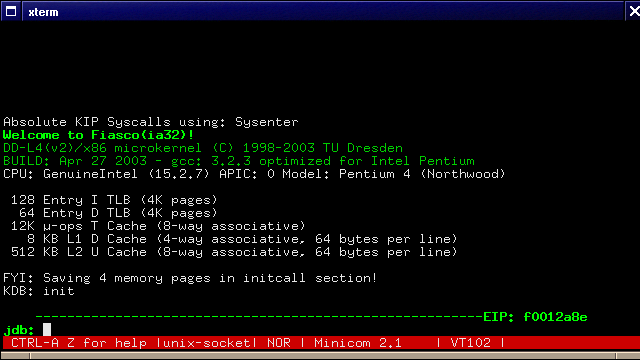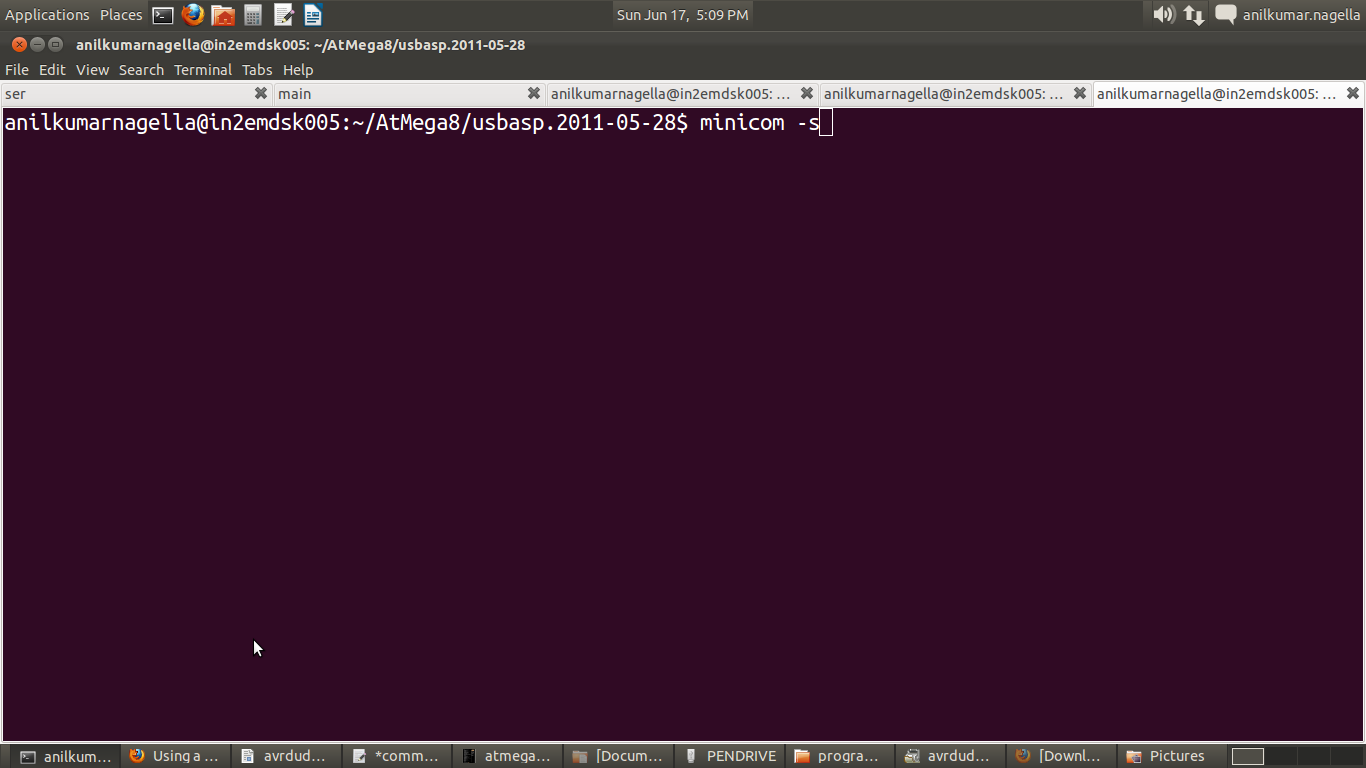
- #Configuring minicom how to#
- #Configuring minicom install#
- #Configuring minicom serial#
- #Configuring minicom driver#
Hit enter, and you may be asked for your username, indicating a successful connection. Once saved, one may choose Exit, and one is at the minicom prompt. Once configured, one may "Save setup as dfl", which will save these as the default configurations for future connections (/etc/minicom/minirc.dfl). Once these have been adjusted, one may want to also go to the Modem and dialing menu and remove all information in setting options A through I.

Next, one will want to consult the hardware vendor's manual for the Bits per second, data bits, Parity, stop bits, and Flow control.
#Configuring minicom serial#
Then, adjust the Serial Device to the device one has, for example: A - Serial Device : /dev/ttyS0 One will next choose "Serial port setup'. Next, enter in a terminal enter: sudo minicom -s which we will need in order to use Minicom. In the first section above it is ttyS0, the other is ttyUSB0. What we are interested in is the name of the serial port. usb 4-3: pl2303 converter now attached to ttyUSB0 audit(1243322582.732:2): type=1503 operation="inode_permission" requested_mask="a::" denied_mask="a::" name="/dev/tty" pid=5705 profile="/usr/sbin/cupsd" namespace="default"įor a USB-to-Serial adapter, one may see: console enabled If it is a direct serial connection, the output will be something like this: console enabled In order to find the name of your port(s) enter this command in terminal: dmesg | grep tty
#Configuring minicom install#
Install the program with: sudo apt-get install minicomĪlternatively, you can get Minicom via the Synaptic Package Manager. It is used to talk to external RS-232 devices such as mobile phones, routers, and serial console ports.
#Configuring minicom how to#
The following is what you will need to do to use your new configurationĪs an example I named mine cisco so I would type this: sudo minicom ciscoĬomplete! You now have Minicom installed and configured to use your USB serial device as well as now know how to launch your configuration.Minicom is a text-based serial port communications program.Now we can go ahead and exit since the configuration is all done for this device.This will be the name you will type when you want to use this configuration so make sure it is something memorable Go to ‘Save setup as.’ and type a name for this configuration.Now go to ‘Serial port setup’ and match your options to mine with the exception of substituting your device in with the one we determined in step two.Now we will configure Minicom to use this device.Note the last line the device that it says it is mapped to, for me it is ttyUSB0 usb 3-1: FTDI USB Serial Device converter now attached to ttyUSB0 ftdi_sio 3-1:1.0: FTDI USB Serial Device converter detected

usbserial: USB Serial support registered for FTDI USB Serial Device
#Configuring minicom driver#
usbcore: registered new interface driver ftdi_sio usb 3-1: New USB device strings: Mfr=1, Product=2, SerialNumber=3 usb 3-1: New USB device found, idVendor=0403, idProduct=6001 This is what you input into programs such as Minicom to use the device usb 3-1: new full-speed USB device number 2 using xhci_hcd Note the last line how udev creates a device in /dev and assigns this USB device to it. You should see something similar to the following occur. We need to determine which tty your device gets mapped to

Minicom is a text-based modem control and terminal emulation program for Unix-like operating systems, this is used for such applications such as connecting to Cisco networking equipment or other equipment that can take serial input as a means to configure these sorts of devices. This is a guide of how to configure and use Minicom.


 0 kommentar(er)
0 kommentar(er)
